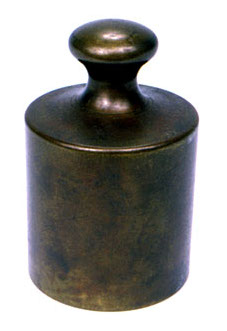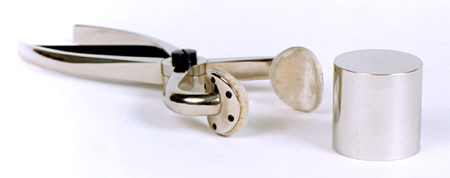Grave (unit) on:
[Wikipedia]
[Google]
[Amazon]
 The grave, abbreviated ''gv'', is the unit of mass used in the first metric system which was implemented in France in 1793. In 1795, the grave was renamed as the kilogram.
The grave, abbreviated ''gv'', is the unit of mass used in the first metric system which was implemented in France in 1793. In 1795, the grave was renamed as the kilogram.
 The grave, abbreviated ''gv'', is the unit of mass used in the first metric system which was implemented in France in 1793. In 1795, the grave was renamed as the kilogram.
The grave, abbreviated ''gv'', is the unit of mass used in the first metric system which was implemented in France in 1793. In 1795, the grave was renamed as the kilogram.
Origin
The modern kilogram has its origins in theAge of Enlightenment
The Age of Enlightenment or the Enlightenment; german: Aufklärung, "Enlightenment"; it, L'Illuminismo, "Enlightenment"; pl, Oświecenie, "Enlightenment"; pt, Iluminismo, "Enlightenment"; es, La Ilustración, "Enlightenment" was an intel ...
and the French Revolution
The French Revolution ( ) was a period of radical political and societal change in France that began with the Estates General of 1789 and ended with the formation of the French Consulate in November 1799. Many of its ideas are conside ...
. In 1790 an influential proposal by Talleyrand called for a new system of units, including a unit of length derived from an invariable length in nature, and a unit of mass (then called ''weight'') equal to the mass of a unit volume of water. In 1791, the Commission of Weights and Measures, appointed by the French Academy of Sciences, chose one ten-millionth of the half meridian
Meridian or a meridian line (from Latin ''meridies'' via Old French ''meridiane'', meaning “midday”) may refer to
Science
* Meridian (astronomy), imaginary circle in a plane perpendicular to the planes of the celestial equator and horizon
* ...
as the unit of length, and named it ''metre
The metre ( British spelling) or meter ( American spelling; see spelling differences) (from the French unit , from the Greek noun , "measure"), symbol m, is the primary unit of length in the International System of Units (SI), though its p ...
''. Initially a ''provisional'' value was used, based on the meridian measurement made in 1740 by Lacaille.
In 1793 the commission defined the unit of mass as a cubic decimetre of distilled water at 0 °C, and gave it the name ''grave''. Two supplemental unit names, gravet (0.001 grave), and bar (1000 grave), were added to cover the same range as the old units, resulting in the following decimal series of units: milligravet, centigravet, decigravet, gravet, centigrave, decigrave, grave, centibar, decibar, bar. As measured by the customary unit of mass in use in France at the time, the mass of the new unit volume (1 dm3provisional) of water at 0 °C was determined by Lavoisier
Antoine-Laurent de Lavoisier ( , ; ; 26 August 17438 May 1794),
CNRS ( Haüy to be 18841
 After the definitions were finalized in 1799, an all-platinum kilogram prototype was fabricated with the objective that it would equal, as close as was scientifically feasible for the day, the mass of one cubic decimetre of water at 4°C.
It was called the ''Kilogramme des Archives'' as it was stored in the Archives Nationales in Paris. The prototype was presented to the Archives of the Republic in June, and on December 10, 1799 the prototype was formally ratified as the ''Kilogramme des Archives'' (Kilogram of the Archives)
After the definitions were finalized in 1799, an all-platinum kilogram prototype was fabricated with the objective that it would equal, as close as was scientifically feasible for the day, the mass of one cubic decimetre of water at 4°C.
It was called the ''Kilogramme des Archives'' as it was stored in the Archives Nationales in Paris. The prototype was presented to the Archives of the Republic in June, and on December 10, 1799 the prototype was formally ratified as the ''Kilogramme des Archives'' (Kilogram of the Archives)Armoire de fer
(in English: Iron chest), vault built in 1790 and used to store kilogram and metre prototypes and the kilogram was defined as being equal to its mass. This standard stood for the next ninety years, until being replaced in 1889 by the platinum–iridium
CNRS ( Haüy to be 18841
grain
A grain is a small, hard, dry fruit ( caryopsis) – with or without an attached hull layer – harvested for human or animal consumption. A grain crop is a grain-producing plant. The two main types of commercial grain crops are cereals and legu ...
s.
Since a mass standard made of water would be inconvenient and unstable, the regulation of commerce necessitated the manufacture of a ''practical realisation'' of the water-based definition of mass. Accordingly, a provisional mass standard of the grave was made as a single-piece, metallic artefact.
Transition to the kilogram
On April 7, 1795, thegram
The gram (originally gramme; SI unit symbol g) is a unit of mass in the International System of Units (SI) equal to one one thousandth of a kilogram.
Originally defined as of 1795 as "the absolute weight of a volume of pure water equal to ...
was decreed in France to be "the absolute weight of a volume of pure water equal to the cube of the hundredth part of the metre, and at the temperature of melting ice".
The law also replaced the three names gravet, grave and bar by a single generic unit name: the gram. The new gram was equal to the old gravet. Four new prefixes (deca, hecto, kilo, and myria) were added to the metric system to cover almost the same range of units as in 1793 (milligram, centigram, decigram, gram, decagram, hectogram, kilogram, myriagram). The brass prototype of the grave was renamed to provisional kilogram.
In 1799 the provisional units were replaced by the final ones. Delambre and Méchain had completed their new measurement of the meridian, and the final metre was 0.03% smaller than the provisional one. Hence the final kilogram, being the mass of one cubic decimetre of water, was 0.09% lighter than the provisional one. In addition, the temperature specification of the water was changed from 0 °C to the point where the density of water is maximal (about 4 °C). This change of temperature added 0.01% to the final kilogram.
At the same time, work was commissioned to precisely determine the mass of a cubic decimetre (one litre
The litre (international spelling) or liter (American English spelling) (SI symbols L and l, other symbol used: ℓ) is a metric unit of volume. It is equal to 1 cubic decimetre (dm3), 1000 cubic centimetres (cm3) or 0.001 cubic metre (m3 ...
) of water.
The same decree also defined the litre as follows: "Litre: the measure of volume, both for liquid and solids, for which the displacement would be that of a cube ith sides measuring
The Ith () is a ridge in Germany's Central Uplands which is up to 439 m high. It lies about 40 km southwest of Hanover and, at 22 kilometres, is the longest line of crags in North Germany.
Geography
Location
The Ith is immediatel ...
one-tenth of a metre." Original text: "" Although the decreed definition of the kilogram specified water at 0°C—its highly stable ''temperature'' point—the French chemist Louis Lefèvre-Gineau and the Italian naturalist Giovanni Fabbroni chose to redefine the standard in 1799 to water's most stable ''density'' point: the temperature at which water reaches maximum density, which was measured at the time as 4°C.Modern measurements show the temperature at which water reaches maximum density is 3.984°C. However, the scientists at the close of the 18th century concluded that the temperature was 4°C.
They concluded that one cubic decimetre of water at its maximum density was equal to 99.9265% of the target mass of the provisional kilogram standard made four years earlier.
Kilogramme des Archives
 After the definitions were finalized in 1799, an all-platinum kilogram prototype was fabricated with the objective that it would equal, as close as was scientifically feasible for the day, the mass of one cubic decimetre of water at 4°C.
It was called the ''Kilogramme des Archives'' as it was stored in the Archives Nationales in Paris. The prototype was presented to the Archives of the Republic in June, and on December 10, 1799 the prototype was formally ratified as the ''Kilogramme des Archives'' (Kilogram of the Archives)
After the definitions were finalized in 1799, an all-platinum kilogram prototype was fabricated with the objective that it would equal, as close as was scientifically feasible for the day, the mass of one cubic decimetre of water at 4°C.
It was called the ''Kilogramme des Archives'' as it was stored in the Archives Nationales in Paris. The prototype was presented to the Archives of the Republic in June, and on December 10, 1799 the prototype was formally ratified as the ''Kilogramme des Archives'' (Kilogram of the Archives)(in English: Iron chest), vault built in 1790 and used to store kilogram and metre prototypes
International Prototype of the Kilogram
The International Prototype of the Kilogram (referred to by metrologists as the IPK or Le Grand K; sometimes called the '' ur-kilogram,'' or ''urkilogram,'' particularly by German-language authors writing in English) is an object that was used t ...
(IPK).
See also
*Gram
The gram (originally gramme; SI unit symbol g) is a unit of mass in the International System of Units (SI) equal to one one thousandth of a kilogram.
Originally defined as of 1795 as "the absolute weight of a volume of pure water equal to ...
* International System of Units (SI)
*Kilogram
The kilogram (also kilogramme) is the unit of mass in the International System of Units (SI), having the unit symbol kg. It is a widely used measure in science, engineering and commerce worldwide, and is often simply called a kilo colloquially ...
*Kilogram-force
The kilogram-force (kgf or kgF), or kilopond (kp, from la, pondus, lit=weight), is a non-standard gravitational metric unit of force. It does not comply with the International System of Units (SI) and is deprecated for most uses. The kilogram-f ...
*List of unusual units of measurement
An unusual unit of measurement is a unit of measurement that does not form part of a coherent system of measurement, especially because its exact quantity may not be well known or because it may be an inconvenient multiple or fraction of a bas ...
*Mass
Mass is an intrinsic property of a body. It was traditionally believed to be related to the quantity of matter in a physical body, until the discovery of the atom and particle physics. It was found that different atoms and different element ...
*Metric prefix
A metric prefix is a unit prefix that precedes a basic unit of measure to indicate a multiple or submultiple of the unit. All metric prefixes used today are decadic. Each prefix has a unique symbol that is prepended to any unit symbol. The pr ...
*Metric system
The metric system is a system of measurement that succeeded the decimalised system based on the metre that had been introduced in France in the 1790s. The historical development of these systems culminated in the definition of the Intern ...
*SI base unit
The SI base units are the standard units of measurement defined by the International System of Units (SI) for the seven base quantities of what is now known as the International System of Quantities: they are notably a basic set from which all ...
s
*SI derived unit
SI derived units are units of measurement derived from the
seven base units specified by the International System of Units (SI). They can be expressed as a product (or ratio) of one or more of the base units, possibly scaled by an appropriate ...
s
References
Notes
{{DEFAULTSORT:Grave (Unit) Non-SI metric units Units of mass